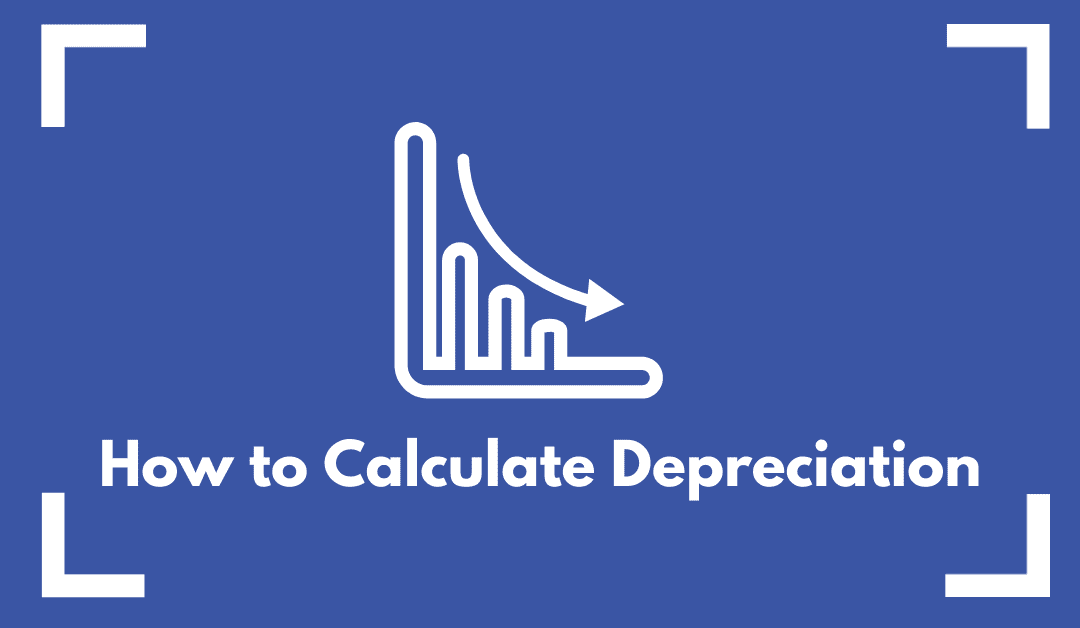
BY
|
The Best Guide to Maximising Small Business Depreciation
Last updated: 19 October 2020
Small business depreciation calculations have gotten a whole lot more simple thanks to the ATO’s simplified depreciation rules that took effect in May 2015.
Due to the COVID-19 pandemic, the government has also introduced significant depreciation and asset write-off incentives for small businesses that can mean significant savings when it comes to small business depreciation claims.
In this guide, we’ll explain to you exactly how you can take advantage of the new simplified depreciation rules including the small business instant asset write-off for your business. If your small business does not qualify for this, fear not, we’ve also got you covered on how you can use the general depreciation rules to maximise your deductions.
Firstly, What Is The Small Business Asset Write-Off?
To put it simply, rather than following the traditional form of depreciation methods, if you qualify as a small business for the purposes of depreciation, you can instantly write-off your assets as a tax deduction if it falls within a certain cost value according to the corresponding threshold and time period. The ATO has set out a number of eligibility periods and rules in relation to the scheme to assist in small business depreciation. See below:
| From 7.30pm (AEST) on 6 October 2020 until 30 June 2022 – Immediate Expensing Scheme | Businesses will be able to claim full deductions for the full cost of capital assets purchased and first used by 30 June 2022 SMEs with $50m in annual revenue can fully expense all secondhand assets as well | Businesses with annual revenue up to $5bn |
| From 12 March 2020 until 31 December 2020 | Instantly deduct the business portion of most depreciating assets costing less than $150,000 | Businesses with between $50m and $500m in annual revenue |
| From 7.30pm (AEST) on 12 May 2015 until 28 January 2019 | Instantly deduct the business portion of most depreciating assets costing less than $20,000 each | |
| From 29 January 2019 until before 7.30pm (AEDT) 2 April 2019 | Instantly deduct the business portion of most depreciating assets costing less than $25,000 each | |
| From 2 April 2019, 7.30pm (AEDT) until 30 June 2020 | Instantly deduct the business portion of most depreciating assets costing less than $30,000 each | |
| From 1 July 2019 | Instantly deduct the business portion of most depreciating assets costing less than $1,000 each |
Note: your assets must be purchased and put to use within the set period for it to qualify for the small business instant asset write-off. All costs including the purchase, transportation and installation costs must be included in the aggregated cost of the asset.
In addition, you must subtract any proportion of private use of the asset when claiming on small business depreciation. Therefore, the proportion used for business purposes is the balance that is tax-deductible. It’s important to know that even though your asset may only be partially tax-deductible, the entire cost of the asset must fall below the instant asset write-off threshold to qualify.
When you dispose or sell off the asset in the future that you claimed the instant asset write-off, you must include the income received from the sale in your assessable income.
Excluded Assets for Small Business Depreciation
There are particular types of assets that are not eligible for depreciation no matter the value. These include:
- Leased assets, or assets that are expected to be leased, for more than 50% of the time on a depreciating asset lease
- Assets you allocated to a low-value pool (see below) before using the simplified depreciation rules
- Horticultural plants including grapevines
- Software allocated to a software development pool (but not other software)
- Capital works
The Small Business Pool for Depreciating Assets Above the Threshold
If you have an asset that is of an equal or greater guest than the relevant instant asset write-off threshold, you can claim small business depreciation at a rate of:
- 15% deduction in the year the asset was used or installed ready for use
- 30% deduction each year after the first year
Should the small business pool be less than the instant asset write-off threshold at the end of the financial year, you can deduct the balance of the pool.
Effective Life of an Asset
What is an effective asset life? This refers to how long an asset can be used to produce income, subject to:
- wear and tear at a reasonable rate
- maintained in reasonably good order and condition
- the period of which it is likely to be sold, abandoned or scrapped
Depending on which industry you are in, the ATO updates annually the taxation rulings that determine the effective life for the use of small business depreciation. Another alternative is to determine the effective life yourself by estimating how many years the asset will reasonable be able to produce income given the application of use.
You might also be interested in our article on Reducing Tax on your BAS
Small Business Depreciation Rule #1: Prime Cost or Straight-Line Method
This is generally the most simple way to calculate your small business depreciation for your asset. The prime cost or straight-line method is used when you assume that the value of a depreciating asset decreases uniformly over its effective asset life. Therefore, you are claiming a fixed amount each year based on the following formula:
Asset’s cost × (days held ÷ 365) × (100% ÷ asset’s effective life)
Example: Prime Cost/Straight-Line Method
For an asset that costs $40,000 and has an effective life of 10 years, you can claim 10% of its cost (or $4,000) in each of the 10 years. The calculation is:
$40,000 x (365 ÷ 365) x 10% = $4,000
Small Business Depreciation Rule #2: Diminishing Value Method
The diminishing value method is used when you assume that the value of a depreciating asset decreases more in the earlier years of the asset life. Therefore, the calculation is:
Base value × (days held ÷ 365) × (200% ÷ asset’s effective life)
Example: Diminishing Value Method
For an asset that costs $40,000 and has an effective life of 10 years, the claim for the first year will be:
$40,000 x (365 ÷ 365) x (200% ÷ 10) = $8,000
For the second year, the calculation is based on a reduced base value:
$32,000 x (365 ÷ 365) × (200% ÷ 10) = $6,400
Third-year:
$25,000 x (365 ÷ 365) × (200% ÷ 10) = $5,000
This continues until the value of the asset reaches zero.
Low-Value Asset Pool
A low-value asset pool for the purposes of small business depreciation is used for assets that cost less than $1,000 or for assets that have been depreciated for one or more years and are now below $1,000 in value.
When you pool low-value assets into the pool, you can calculate at a depreciation rate of 37.5% each year.
However, if you acquire an asset and allocate it to the pool during the same financial year, you can only calculate it at a rate of 18.85% (half of 37.5%) in the first year.
You also cannot allocate the following assets to a low-value pool:
- Assets costing less than $100 that an immediate deduction can be claimed
- Assets costing up to $300 used to earn income other than from a business
- Assets that can be claimed under the simplified depreciation rules for small business
- Assets which were previously calculated using the prime cost method
- Portable electronic devices such as laptops, portable printers, calculators, mobile phones, GPS navigators, computer software, tools of trade, protective clothing, if it is provided to your employee or your business paid some or all of the cost of the item
- Horticultural plants including grapevines
- Particular assets used for research and development activities
GST & Depreciation Rules
If your business is registered for GST, you can claim the full GST credit but you must exclude the GST amount you paid on the asset when you calculate your depreciation values. In this case, instant asset write-off thresholds are exclusive of any GST.
If you are not registered for GST, you must include the GST amount you paid on the asset in your depreciation values. In this case, instant asset write-off thresholds are inclusive of any GST.
Key Takeaways
While this helps with simplifying small business depreciation, you can see that there are still many variables that must be taken into account to ensure you are correctly applying the right depreciation rules and methods to your assets. If you’re still confused and not certain about what the best method is for your assets, then it’s highly recommended to speak to a qualified tax accountant. Box Advisory Services can assist with assessing your situation and providing you with recommendations on the best approach to minimising tax through depreciation. Simply book a free 45-minute consultation with us to find out how we can help with your small business depreciation situation.
Sign up to our monthly newsletter where we share exclusive small business and contractor advice!
Disclaimer:
Please note that every effort has been made to ensure that the information provided in this guide is accurate. You should note, however, that the information is intended as a guide only, providing an overview of general information available to contractors and small businesses. This guide is not intended to be an exhaustive source of information and should not be seen to constitute legal or tax advice. You should, where necessary, seek your own advice for any legal or tax issues raised in your business affairs.



